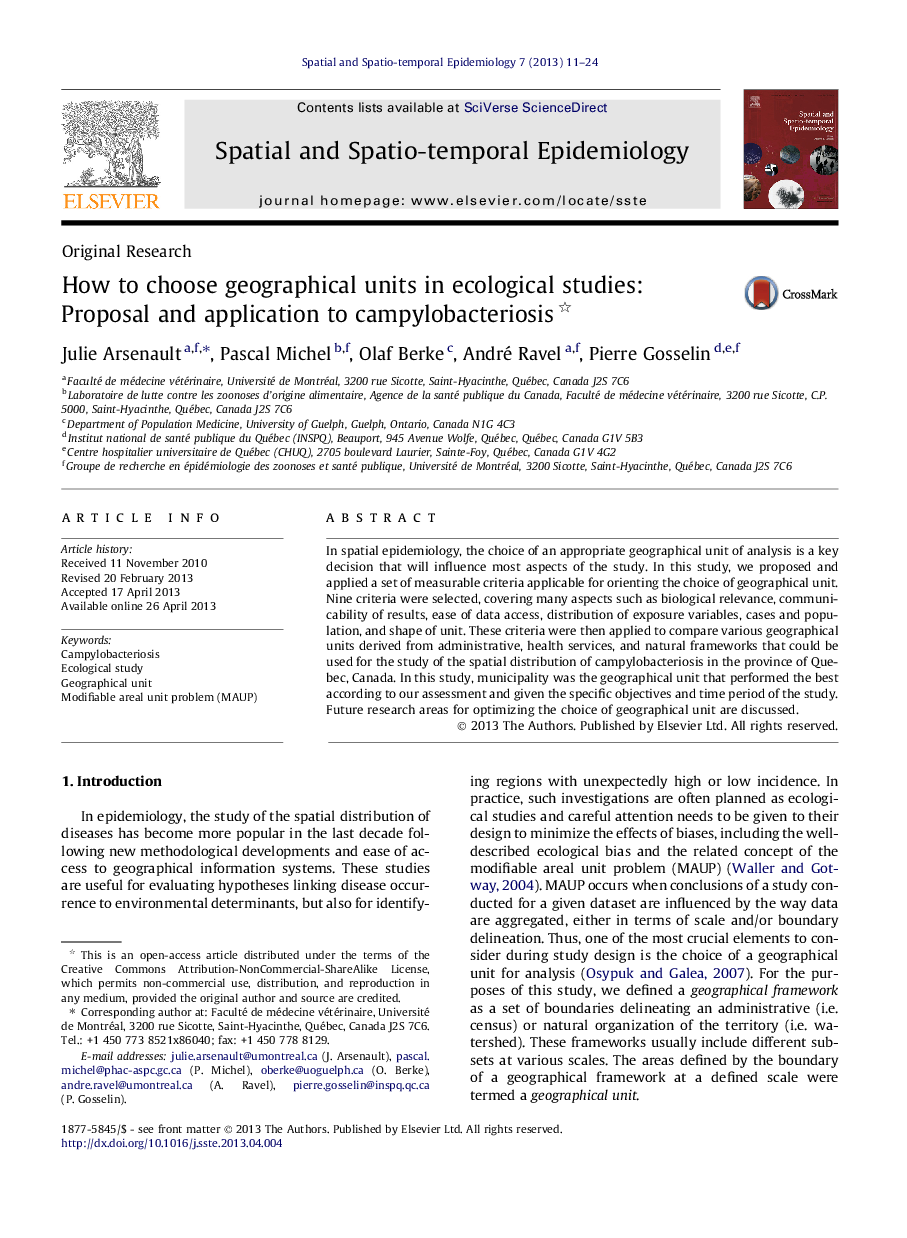| Article ID | Journal | Published Year | Pages | File Type |
|---|---|---|---|---|
| 7496175 | Spatial and Spatio-temporal Epidemiology | 2013 | 14 Pages |
Abstract
In spatial epidemiology, the choice of an appropriate geographical unit of analysis is a key decision that will influence most aspects of the study. In this study, we proposed and applied a set of measurable criteria applicable for orienting the choice of geographical unit. Nine criteria were selected, covering many aspects such as biological relevance, communicability of results, ease of data access, distribution of exposure variables, cases and population, and shape of unit. These criteria were then applied to compare various geographical units derived from administrative, health services, and natural frameworks that could be used for the study of the spatial distribution of campylobacteriosis in the province of Quebec, Canada. In this study, municipality was the geographical unit that performed the best according to our assessment and given the specific objectives and time period of the study. Future research areas for optimizing the choice of geographical unit are discussed.
Related Topics
Health Sciences
Medicine and Dentistry
Public Health and Health Policy
Authors
Julie Arsenault, Pascal Michel, Olaf Berke, André Ravel, Pierre Gosselin,
